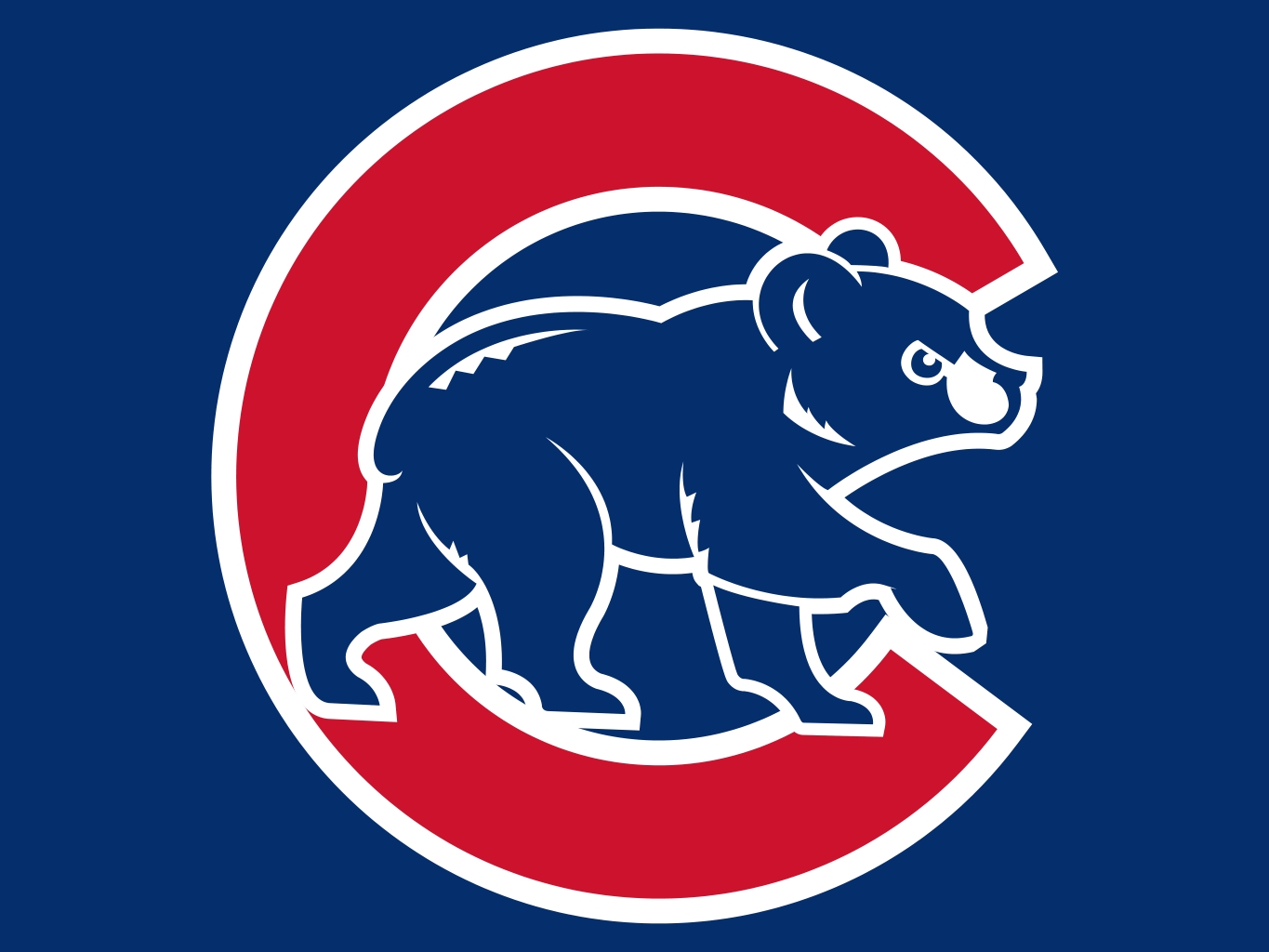Unforgettable Adventures With The Chicago Cubs
What are "cubs"?
Cubs are the young of certain carnivorous mammals, such as lions, tigers, bears, and wolves. They are typically born blind and helpless and rely on their mothers for food and protection.
Cubs are important members of their prides or packs. They play an important role in the social structure of the group and help to ensure the survival of the species. Cubs are also a source of great joy and entertainment for their parents and other members of the group.
Throughout history, cubs have been featured in art, literature, and mythology. They have been used to represent strength, courage, and playfulness. Cubs are also popular pets, and many people enjoy watching them grow and develop.
Cubs are a fascinating and important part of the animal kingdom. They are a reminder of the importance of family and the strength of the bond between a mother and her young.
Cubs
Cubs are the young of certain carnivorous mammals, such as lions, tigers, bears, and wolves. They are typically born blind and helpless and rely on their mothers for food and protection.
- Definition: Young carnivorous mammals
- Characteristics: Blind and helpless at birth
- Importance: Ensure the survival of the species
- Social structure: Play an important role in the social structure of the group
- Cultural significance: Featured in art, literature, and mythology
- Conservation status: Some species of cubs are endangered or threatened
Cubs are a fascinating and important part of the animal kingdom. They are a reminder of the importance of family and the strength of the bond between a mother and her young. Cubs also play a vital role in the ecosystem, helping to control populations of prey animals. By understanding the key aspects of cubs, we can better appreciate their importance and work to protect them.
Definition
The definition of "cubs" as "young carnivorous mammals" highlights the key characteristics of these animals. Cubs are born to carnivorous mammals, which means that they eat meat. They are also typically born blind and helpless, and rely on their mothers for food and protection. This definition helps us to understand the basic biology of cubs and how they fit into the animal kingdom.
The connection between "cubs" and "young carnivorous mammals" is important because it helps us to understand the role that cubs play in the ecosystem. Cubs are an important part of the food chain, and they help to control populations of prey animals. They are also a source of food for other animals, such as scavengers and predators.
Understanding the definition of "cubs" as "young carnivorous mammals" is also important for conservation efforts. Many species of cubs are endangered or threatened, and it is important to understand their biology in order to develop effective conservation strategies.
Characteristics
The characteristic of being "blind and helpless at birth" is a defining feature of cubs. It highlights their vulnerability and dependence on their mothers for survival.
- Facet 1: Physical Development
Cubs are born with underdeveloped senses and motor skills, making them highly vulnerable to predators and other threats. This physical helplessness necessitates constant care and protection from their mothers.
- Facet 2: Sensory Limitations
Being blind at birth, cubs rely heavily on their other senses, such as hearing and smell, to navigate their surroundings and locate their mothers. This sensory limitation shapes their early learning and behavioral patterns.
- Facet 3: Maternal Care
The helplessness of cubs fosters a strong bond with their mothers. Maternal care is crucial for cubs' survival, as they depend on their mothers for nourishment, warmth, and protection.
- Facet 4: Survival Strategies
Over time, cubs develop strategies to cope with their initial helplessness. They learn to vocalize to attract their mothers' attention, huddle together for warmth, and gradually explore their surroundings. These strategies enhance their chances of survival.
In summary, the characteristic of being "blind and helpless at birth" profoundly impacts the biology, behavior, and survival of cubs. It underscores their vulnerability and highlights the critical role of maternal care and the development of adaptive strategies in ensuring their well-being.
Importance
Cubs play a pivotal role in ensuring the survival of their species. As the offspring of carnivorous mammals, cubs represent the next generation and the continuation of their genetic lineage. Their survival is crucial for the long-term health and stability of their populations.
One of the primary reasons for the importance of cubs is their contribution to the gene pool. Each new cub introduces genetic diversity into the population, increasing the chances of survival in changing environmental conditions. Cubs also inherit traits that have proven successful in their parents, ensuring the continuation of advantageous characteristics.
Furthermore, cubs play a vital role in population growth. By producing and raising offspring, adult carnivores increase the number of individuals within their species. This population growth helps to maintain a stable ecosystem and provides a buffer against environmental challenges, such as disease or habitat loss.
In addition to their genetic and demographic contributions, cubs also serve as a source of future knowledge and research. By studying cubs, scientists can gain insights into the biology, behavior, and ecology of their species. This knowledge can be used to develop conservation strategies and protect endangered species.
Understanding the importance of cubs is essential for conservation efforts. By recognizing the role that cubs play in ensuring the survival of their species, we can better appreciate the need to protect them and their habitats.
Social structure
Within the intricate dynamics of animal societies, cubs play a significant role in shaping and maintaining the social structure of their groups. This role is particularly evident in species where cubs are born into hierarchical societies, such as lions, wolves, and bears.
Cubs serve as a vital bridge between generations, ensuring the continuity and stability of the social structure. As they mature, they learn the rules and norms of their group, reinforcing the established social hierarchy. Through interactions with adult members, cubs develop essential social skills and behaviors that contribute to the overall harmony and cohesion of the group.
The presence of cubs can also influence the behavior of adult animals. In some species, such as wolves, the presence of cubs triggers increased protective instincts in adult members, strengthening the bonds within the pack. Cubs may also foster a sense of unity and cooperation among adults, as they work together to care for and protect the young.
Understanding the role of cubs in the social structure of animal groups is crucial for conservation efforts. By recognizing the importance of cubs in maintaining stable and resilient populations, we can better appreciate the need to protect them and their habitats.
Cultural significance
Cubs have captured the human imagination for centuries, featuring prominently in art, literature, and mythology across diverse cultures. This cultural significance stems from the unique characteristics and behaviors of cubs, which evoke feelings of ternura, curiosity, and wonder.
In art, cubs have been depicted in various forms, from realistic paintings to whimsical illustrations. Their playful nature and adorable appearance have made them popular subjects for artists throughout history., such as "The Lion Cub" by Rosa Bonheur and "Cubs at Play" by Pablo Picasso, showcase the beauty and innocence of these young animals.
In literature, cubs have playeds in shaping narratives and conveying moral lessons. From the mischievous Mowgli in Rudyard Kipling's "The Jungle Book" to the wise and courageous Simba in Disney's "The Lion King," cubs have left an enduring mark on the literary world. These characters embody the qualities of youth, resilience, and the power of imagination.
In mythology, cubs have often been associated with strength, courage, and ferocity. In ancient Egyptian mythology, the goddess Bastet was depicted as a cat-headed woman, symbolizing the protective and nurturing qualities of feline mothers. In Roman mythology, the twins Romulus and Remus were raised by a wolf, highlighting the perceived ferocity and loyalty of these animals.
Understanding the cultural significance of cubs provides valuable insights into human-animal relationships and the power of storytelling. By exploring the ways in which cubs have been represented and interpreted throughout history, we gain a deeper appreciation for the multifaceted nature of these animals and their enduring impact on human culture.
Conservation status
The conservation status of cubs is closely intertwined with the overall well-being and survival of their species. Several factors contribute to the endangerment or threat to cubs, including habitat loss, fragmentation, poaching, and climate change.
- Habitat loss and fragmentation:
As human populations expand and urban areas grow, natural habitats are destroyed or fragmented, reducing the availability of suitable living spaces for cubs and their parents. This loss of habitat can disrupt breeding patterns, increase competition for resources, and make cubs more vulnerable to predators. - Poaching:
Cubs are often targeted by poachers for their fur or other body parts, which are illegally sold in the black market. This illegal trade poses a significant threat to endangered species, as it can decimate populations and disrupt the natural balance of ecosystems. - Climate change:
Climate change is altering habitats and disrupting ecosystems around the world. Rising temperatures, changes in precipitation patterns, and more frequent extreme weather events can impact the availability of food and water for cubs and their parents. As habitats become less suitable, cubs may face increased mortality rates and reduced survival chances. - Conservation efforts:
Fortunately, there are ongoing conservation efforts aimed at protecting cubs and their habitats. These efforts include establishing protected areas, implementing anti-poaching measures, and raising awareness about the importance of conservation. By supporting these initiatives, we can help ensure the survival of cubs and the species they represent.
The conservation status of cubs serves as a reminder of the urgent need to protect and preserve wildlife and their habitats. Through collective efforts and responsible actions, we can create a future where cubs and other species can thrive and continue to play their vital roles in the intricate web of life.
Frequently Asked Questions about Cubs
This section addresses common questions and concerns regarding cubs, providing informative answers to enhance understanding and dispel misconceptions.
Question 1: What is the definition of a cub?
A cub is a young carnivorous mammal, typically born blind and helpless, relying on its mother for food and protection.
Question 2: What is the significance of cubs in the animal kingdom?
Cubs play a crucial role in ensuring the survival of their species by introducing genetic diversity and increasing population numbers.
Question 3: How do cubs contribute to the social structure of animal groups?
Cubs contribute to social structure by reinforcing norms and strengthening bonds, fostering cooperation and unity among adult members.
Question 4: What is the cultural significance of cubs?
Cubs have been featured prominently in art, literature, and mythology, representing qualities such as playfulness, courage, and ferocity.
Question 5: What factors contribute to the endangerment of cubs?
Habitat loss, poaching, and climate change are significant threats to cubs, impacting their survival and the stability of their populations.
Question 6: How can we help protect cubs and their habitats?
Supporting conservation efforts, reducing our impact on the environment, and raising awareness can contribute to the protection of cubs and their future.
In summary, cubs are vital members of their respective species and cultural symbols that evoke a range of emotions and associations. Understanding their importance and the challenges they face can inspire us to take action and ensure their well-being for generations to come.
Transition to the next article section:
Conclusion
Throughout this exploration of "cubs," we have delved into their definition, characteristics, importance, social structure, cultural significance, and conservation status. These young carnivorous mammals play a crucial role in the survival of their species and the delicate balance of ecosystems.
As we recognize the multifaceted nature of cubs, it is imperative that we remain committed to their protection and the preservation of their habitats. By supporting conservation efforts, reducing our ecological footprint, and raising awareness about the importance of cubs, we can ensure that these magnificent creatures continue to thrive for generations to come.



Detail Author:
- Name : Walton Purdy
- Username : nhills
- Email : wkuhn@hoeger.com
- Birthdate : 1981-07-15
- Address : 60504 Juliet Hills Port Emmie, NY 14159-4230
- Phone : +1 (531) 760-5900
- Company : Thiel-Harris
- Job : Host and Hostess
- Bio : Animi voluptas consequatur inventore accusamus qui magnam nemo autem. Porro ut eos id ullam provident. Est quod repellendus rem reiciendis.
Socials
twitter:
- url : https://twitter.com/lhodkiewicz
- username : lhodkiewicz
- bio : Placeat ipsam omnis fugiat omnis. Debitis corrupti repudiandae quidem debitis. Provident qui non in fuga hic quam inventore.
- followers : 6063
- following : 273
facebook:
- url : https://facebook.com/london_id
- username : london_id
- bio : Alias et dignissimos vel illo aut labore et. Praesentium cupiditate eum ad.
- followers : 5054
- following : 2336